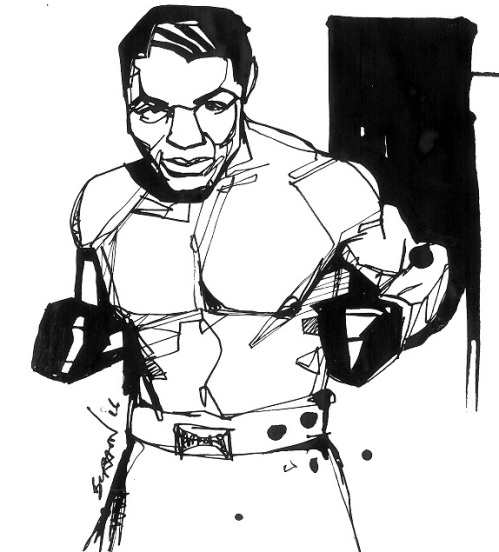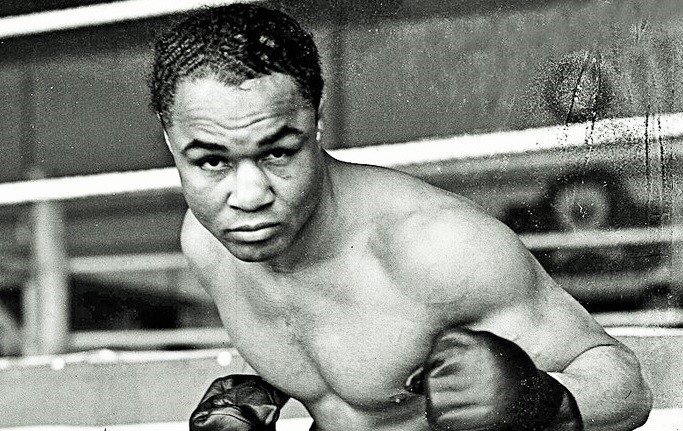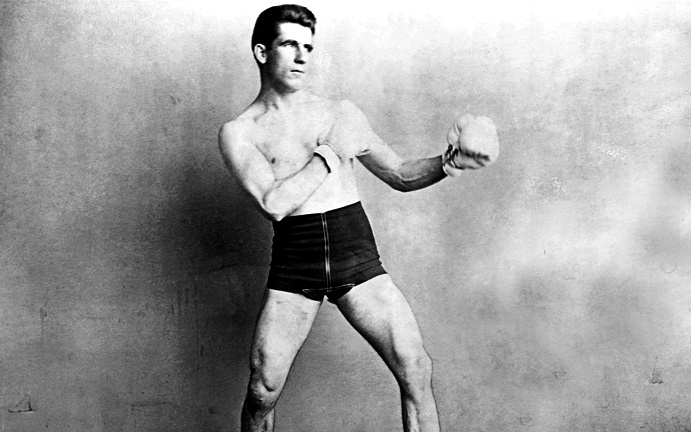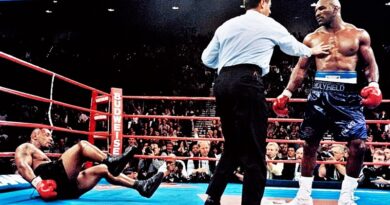Jan. 4, 1940: Armstrong vs Ghnouly
As Marvin Gaye sang back in the day, “Ain’t nothin’ like the real thing, baby,” and these days how boxing fans yearn for “the real thing,” for meaningful competition and genuine greatness. You’ll recall how several years back Floyd Mayweather Jr. took to calling himself “The Best Ever,” ‘TBE’ for short, and while most took the self-accolade with a massive grain of salt, the fact others did not tells all you need to know about the lack of perspective some fight fans have in regards to the history of pugilism. The truth is the Golden Age of boxing is a long way gone now, decades ago, and the true greats accomplished feats today’s fighters can only dream about.
Take, for example, the man they called “Homicide Hank,” the one and only Henry Armstrong, without question one of the greatest pressure fighters in the sport’s history, a dynamo of non-stop aggression who attacked and cut down opponents like a buzz-saw on wheels. In 1937 alone he fought 27 times, capping one of the greatest single years in any boxer’s career by battering Petey Sarron to capture his first world championship. Think about it: 27 fights in one year. All wins, all but one by KO. That’s greatness.

So is the fact that in May of the following year he jumped all the way up from featherweight to welterweight to challenge fellow all-time great Barney Ross. After dominating Ross, he dropped down in weight and challenged another champion and Hall of Famer, Lou Ambers, out-toughing “The Herkimer Hurricane” in a brutal 15 round war and thus winning the lightweight crown. Armstrong would vacate the featherweight title, but for a brief time he held three of boxing’s eight traditional world championships at the same time, a feat never to be duplicated. And we won’t even get into how in March of 1940 he challenged for the middleweight title — against yet another Hall of Famer, Ceferino Garcia — but had to settle for a draw, though most present thought he deserved the decision.
In the meantime Armstrong maintained his hectic schedule, notching win after win against truly formidable competition. This was an era very different from ours, when the ranks were crowded with excellent fighting men, not diluted by superfluous weight classes and meaningless titles, and when fans demanded that top pugilists test themselves against the most dangerous rivals.

And the simple truth is one would be hard-pressed to find a better stretch of wins in all of boxiana than the ones Armstrong piled up in his prime. The list of battlers he bested during those years, in addition to Sarron, Ross, Ambers and Garcia, includes such names as Baby Arizmendi, Benny Bass, Juan Zurita, Frankie Klick, Lew Feldman, Chalky Wright, and Lew Jenkins, a line-up of champions and title challengers that, collectively, eclipses Floyd’s entire record in terms of quality opposition. And that’s just a sample of the many fighters battered by Armstrong’s churning fists.
To be more concrete, in February of 1936, Henry lost by decision to Richie Fontaine. One month later he avenged the defeat and then began a truly incredible run, winning all but three of 65 bouts in fewer than five years. The three matches he didn’t win included the aforementioned draw, a disqualification, and a highly controversial loss to Ambers in their rematch when referee Arthur Donovan deducted five points from Henry for fouls, causing Ambers’ decision win to be widely regarded as an injustice; Armstrong had in fact, for the second time, gotten the better of “The Herkimer Hurricane.” Think about it: 65 tilts in 55 months against some of the best fighters in boxing history, and not one truly legit defeat. Talk about “the real thing.”

Following the controversial loss to Ambers, which had only reinforced Armstrong’s reputation as the greatest boxer alive after Joe Louis, Henry focused his energies on defending his 147 pound title. He was actually a bit small for a welterweight, but that didn’t stop “Hammerin’ Henry” from racking up the most title defenses in the division’s history, nineteen in total, before the one-and-only Fritzie Zivic toppled him in a huge upset. But before he ever crossed paths with “The Croat Comet,” Armstrong notched title defense number fourteen in his hometown of St. Louis, Missouri when he took on one Joe Ghnouly, aka “The St. Louis Bearcat.”

The challenger was no slouch himself with 59 wins on his record, but he was not on the same level as his crosstown rival. In other words, Ghnouly was a talented boxer, a legit contender who had gone the distance with Ross and Kid Chocolate and had beaten Eddie Cool, but Henry Armstrong was something more, a true all-time great; indeed, without a trace of hyperbole, we can say Hank was one of The Best Ever. He floored Ghnouly three times in round one, which prompted the challenger to get on his bicycle and keep his distance as best he could over the next few rounds, before three Armstrong left hooks ended the match in the fifth.
And just twenty days later, there was “Homicide Hank” in Madison Square Garden, stopping in nine rounds challenger number fifteen, Pedro Montanez, and inspiring The New York Times to rave about Henry’s fistic “savagery,” declaring that “no man near Armstrong’s inches or poundage could have survived [his] blistering firepower.”

Two knockouts in two world title defenses in just shy of three weeks. That’s how they used to roll, folks. A different time and a different kind of fight game, when boxing fans could watch true legends do battle. And knew “the real thing” when they saw it.
— Michael Carbert





